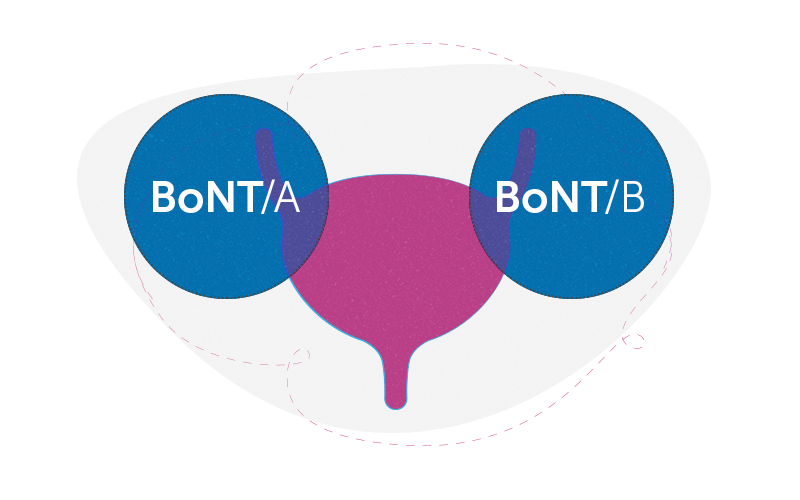Building a bladder-specific Botox

Botulinum toxins are bacterial neurotoxins that also have a range of therapeutic uses. In urology, injections of these potent substances can relax the bladder muscle, helping treat conditions such as overactive bladder and neurogenic bladder. Of the seven types of botulinum toxin, two have been approved by the U.S. Food and Drug Administration (FDA): botulinum toxin A (BoNT/A, sold as Botox) and botulinum toxin B (BoNT/B).
Botulinum toxins work by attaching to nerve receptors in motor neurons controlling muscles, where they block the release of neurotransmitters, leading to muscle paralysis. BoNT/A is “almost perfect for paralyzing skeletal muscles,” says by Min Dong, PhD, a researcher in Boston Children’s Department of Urology. But when it comes to the toxin’s use in urology, there’s room for improvement. In fact, the nerve receptors in bladder tissue are different from those in skeletal tissue. And though safe and effective, both BoNT/A and BoNT/B have the potential to drift from the site of the initial injection, decreasing efficacy and increasing the chance of side effects.
But what if it were possible to create a botulinum toxin that treats urologic conditions without the challenges? That’s the question that fuels Dong’s ongoing work. “Our goal is to develop a chimeric toxin that offers urologists the best of both worlds,” he says.
A toxin tailored to urologic disorders
Such a hybrid botulinum toxin is already in the pipeline, based on more than a decade of research by Dong and his colleagues. In earlier work, they genetically engineered changes to BoNT/B that improved its ability to bind to nerve cells. When administered in a humanized mouse model, the engineered toxin was absorbed more efficiently than the current FDA-approved form of BoNT/A and BoNT/B, leading to more effective and longer muscle paralysis. This means that lower quantities of the toxin would be required for a therapeutic benefit.
These advances have attracted industry attention, and the chimeric A/B toxin has been licensed by a major pharmaceutical company. Through that partnership, a Phase 1 clinical trial testing its safety in humans is now underway. Depending on those results, Dong hopes that an improved botulinum toxin could be available to urologists within the next several years.
“By engineering it to specifically target bladder tissue, we could have a therapeutic toxin that’s tailored to urologic disorders and is more effective than Botox,” he says.
Have questions or want to refer a patient? Contact the Department of Urology.
Related Posts :
-

Promising advances in fetal therapy for vein of Galen malformation
In 2024, Megan Ingram* of California and her husband were preparing for the birth of their third child when a 34-week ...
-

The hidden burden of solitude: How social withdrawal influences the adolescent brain
Adolescence is a period of social reorientation: a shift from a world centered on parents and family to one shaped ...
-

A toast to BRD4: How acidity changes the immune response
It started with wine. Or more precisely, a conversation about it. "My colleagues and I were talking about how some ...
-

A unique marker for pericytes could help forge a new path for pulmonary hypertension care
Pulmonary arterial hypertension (PAH) is a rare condition that’s difficult to treat. The hallmarks of the disease — narrowing of ...





